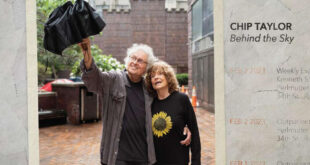
Serenely overlooking Central Park on Fifth Avenue, the Consulate General of France is a beautiful space for an intimate wine tasting. It was there that I sampled some of the amazing vintages of the Crus Bourgeois, which are part of the wine heritage of Bordeaux.
The French, with deep roots in wine making for centuries, have been at ease in establishing standards for their quality wines. The first was the classification system established in 1855. After the upheavals of war and the Great Depression of 1929, there have been varying classifications of designated Crus Bourgeois wines up until the present.
What is the “Cru Bourgeois?” These wines from the Bordeaux region date back to the Middle Ages. The wines are from a variety of properties, some of which overlap with their uber-pricey Cru Classé neighbors. The vineyards in the Cru Bourgeois classification have widely differing profiles and terroirs. They are from the eight prestigious geographical areas with appellation d’origine contrôlée AOC (status): Médoc, Listrac-Médoc, Moulis en Médoc, Margaux, Saint Julien, Pauillac, Haut-Médoc and Saint Estephe. There are a variety of producers, some of whom themselves originate from the Médoc region of France, others of whom hail from other countries and regions, adding their vitality, robust passion and innovation to French wine making.

The French wine industry has transformed itself in recent years, promoting some of its finest quality wines at more affordable prices (certainly less than the $300+ asked for Cru Classé wines from the same region). In 2009 a selective quality assurance procedure for the Crus Bourgeois du Médoc was approved and was implemented in 2010, publicizing its finest Crus Bourgeois 2008 Official Selection of wines from the region. Each September since 2010, the Official Selection of the new vintage is unveiled to the public.
The beauty of being selected to be on the Crus Bourgeois list is that the standards of the wineries must be superlative from year to year. A chateau’s wines cannot rest on its previous laurels. If the independent Bureau Veritas specifications are not followed or if other quality assurance elements are not met, it will not be deemed eligible to present its wine to go through the additional, rigorous selective tasting process.
Specifically, we are discussing red wines that are traditional Bordeaux blends of Cabernet Sauvignon, Cabernet Franc, Merlot, and sometimes Petit Verdot, which are grown in exceptional terroirs in the Médoc. These are in the département of Gironde on the left bank of the Gironde estuary north of Bordeaux, France. This is a premiere wine-making area because of the Gironde River’s moderating and favorable influence. In such a maritime climate, the red grapes ripen more quickly and consistently. The grapes enjoy the water and the soil, which is gravel and clay overlying limestone; the excellent drainage of the gravel mixture provides less opportunity for rot on the grapes and disease on the vines.

At the Master Class conducted by Guest Speaker Jay Youmans, we discovered that after the vineyards have been accepted as adhering to all of the standards set by the Bureau Veritas, initial blind tastings are held. Here benchmark wines are designated, usually about 16 wines selected for the superior quality the tasters wish to be associated with Cru Bourgeois wines.
Then the panel of judges tastes the rest of the wines and gauges them against the benchmarks. To make the list, the wines must be at or above the quality of the benchmarks. This is an independent verification process which insures against conflict of interests. Though it is a tremendous amount of work, the producers are satisfied with the process and feel that it is a welcome challenge for their wines to be required to meet the standards yearly so that their label will the authentic seal of the Crus Bourgeois.
The wines we tasted from the Crus Bourgeois du Médoc Official Selection 2012 were from the following estates: Le Château de Panigon, Domaines Rollan de By, Château LaRose Trintaudon, Château Deyrem Valentin, Château La Haye, Château Meyre, and Vignobles Paloumey.
Although it was difficult to choose my own favorites from the eight wines in the Master Class with respect to the nose, the mouth feel, the palate, and the food pairings I thought might be best, the wines I particularly enjoyed excluded larger percentages of the Petit Verdot grape. I preferred the blends of Cabernet Sauvignon, Merlot, and Cabernet Franc, or of just Cabernet Sauvignon and Merlot. Those with the Petit Verdot grape were a bit more tart, and depending upon the percentages, perhaps a little bitter. That’s just my preference, however; for other palates, larger percentages of Petit Verdot balanced with the right proportions of Merlot and Cabernet Sauvignon might be more enjoyable after the aging process.
Chateau Amour: soft and light with gourmand patisserie flavors. Pairings: roast lamb, duck breast, mature cheeses.
Château Greysac: elegant with floral notes, red berry and spice flavors. Pairings: artisanal cheeses, roast meats.
Château Margaux: aromatic and fruit-driven with a hint of laurel, soft with dusty tannins. Pairings: duck, lamb, aged cheeses.
Château Paloumey: sweetness and lusciousness of fruit, black currant notes. Fragrant nose. Pairings: meats, aged cheeses.
All these wines with the exception of Château Amour have importers and are distributed in the U.S. Follow the links above for more information or check out Cru Bourgeois’ website for its complete list of 2012 Official Selection.
[amazon template=iframe image&asin=B00N42QDB6][amazon template=iframe image&asin=B00HHH069Y][amazon template=iframe image&asin=022601469X][amazon template=iframe image&asin=0764553542][amazon template=iframe image&asin=B00MHIKMFQ] Blogcritics The critical lens on today's culture & entertainment
Blogcritics The critical lens on today's culture & entertainment



